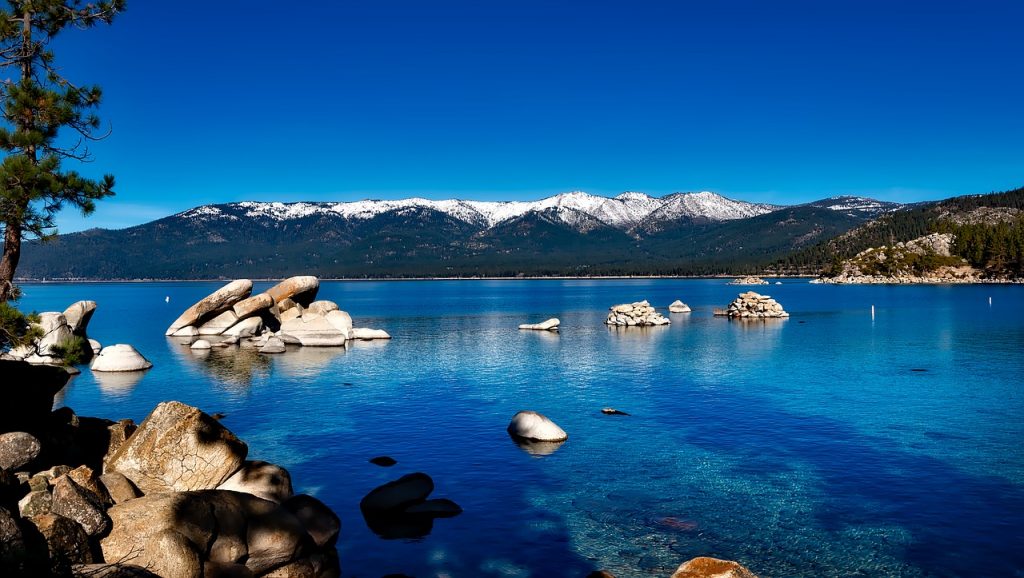Researchers Make Incredible Discovery At The Bottom Of Lake Superior
A shipwreck in Lake Superior from September 14, 1869, named Nucleus, has been positively identified.
This article is more than 2 years old

Lake Superior, one of the biggest lakes on the planet, is often called a freshwater ocean. As such, storms can create challenging sailing conditions, as evidenced by the amount of shipwreck debris littering its bottom. Researchers announced last Wednesday the discovery of the Nucleus, a surprisingly intact shipwreck found 40 miles off the coast of Michigan’s Upper Peninsula.
Dubbed the “Bad Luck Barquentine,” the 144-foot Nucleus had sunk twice before its final demise in Lake Superior on September 14, 1869. The first two wrecks were in relatively shallow waters so the Nucleus was able to be re-floated, repaired, and used again. The unlucky ship had also run aground twice due to leaking.
The Nucleus took on water again on its final day, as it was pounded by one of Lake Superior’s turbulent storms. The crew was able to escape on a lifeboat, abandoning the ship and its load of iron ore. The sailors’ streak of bad luck continued hours later as officers on the S.S. Union spotted the lifeboat but didn’t stop to rescue them.
“What a bunch of jerks, right?” Corey Adkins, communications director for the Great Lakes Shipwreck Historical Society (GLSHS), told ABC News. The crew was finally rescued five hours later by a schooner called Worthington. Remarkably, there was no loss of life.
A barquentine or “schooner barque” is a sailing vessel with three or more masts. On this type of ship, the foremast is square-rigged while the others are fore-and-aft rigged. It was popular at the end of the 19th century because it could carry plenty of cargo with a smaller crew and performed well in windy conditions.
Researchers first found the remains of the Nucleus in the summer of 2021 using the same type of surface-operated marine sonic equipment used by underwater surveyors and archeologists. It was positively identified as the Nucleus in 2022 when researchers examined it underwater with a remotely operated vehicle. The area where the vessel sank is called Lake Superior’s Shipwreck Coast, where the GLSHS estimates about 550 shipwrecks have occurred through the years.
“This is a pretty significant shipwreck,” said GLSHS executive director Bruce Lynn. “Considering its age, the fact that it is a barquentine and we can’t overlook the vessel’s checkered past. The wreck site is littered with shovels too, and a few dinner plates, which speaks to their work and shipboard life.”
Darryl Ertel, Jr., GLSHS’s director of marine operations, said he was “more excited” about the discovery because he expected to find the shipwreck in pieces at the bottom of Lake Superior. “The stern was intact. It had a straight back stern and then the port side also was intact,” he said.
The Nucleus is also one of the oldest vessels ever found along the treacherous, 80-mile stretch between Munising and Whitefish Point. Just under a year ago, the historical society also found the remains of the shipwreck Atlanta nearby, a schooner barge that sank in 1891. One reason both ships remain identifiable is that the wood is free from zebra mussels, an invasive species that cannot flourish in the frigid depths of Lake Superior.
Adkins said that the Bad Luck Barquentine was responsible for at least one other shipwreck besides its own. In 1854, the Nucleus rammed and sank the side-wheeler S.S. Detroit in Lake Huron. “It didn’t have a very lucky life, as far as ships go,” he said.
The ship has wooden “knees” on its hull that the GLSHS has never seen on a shipwreck before. “We don’t really know why they are there,” Adkins said. “If someone knows why, please give us a call.”



